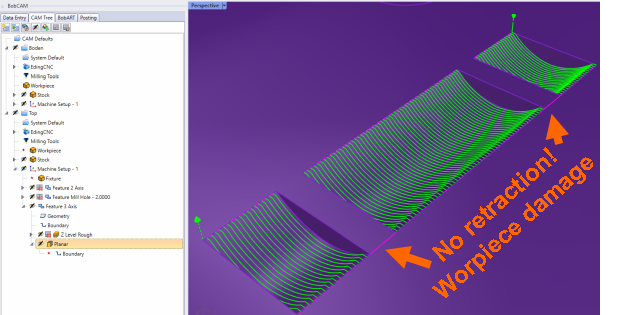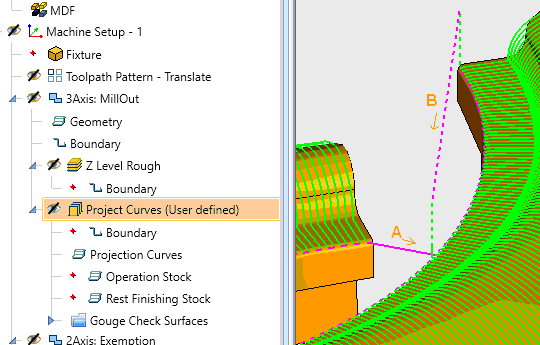Hi,


A…no retraction between objects, B…good job on object itself
Today happened the second time to me: within an operation handling multiple geometries, there is no retraction of the z-axis when switching between the objects. Workpiece is damaged for sure (so happened to me) and in stupid situations, a machine crash can occur.
For me, this is an extremely critical bug. Knowing about it, I would also negligently sell a problematic tool to customers.
Regards, Harald
